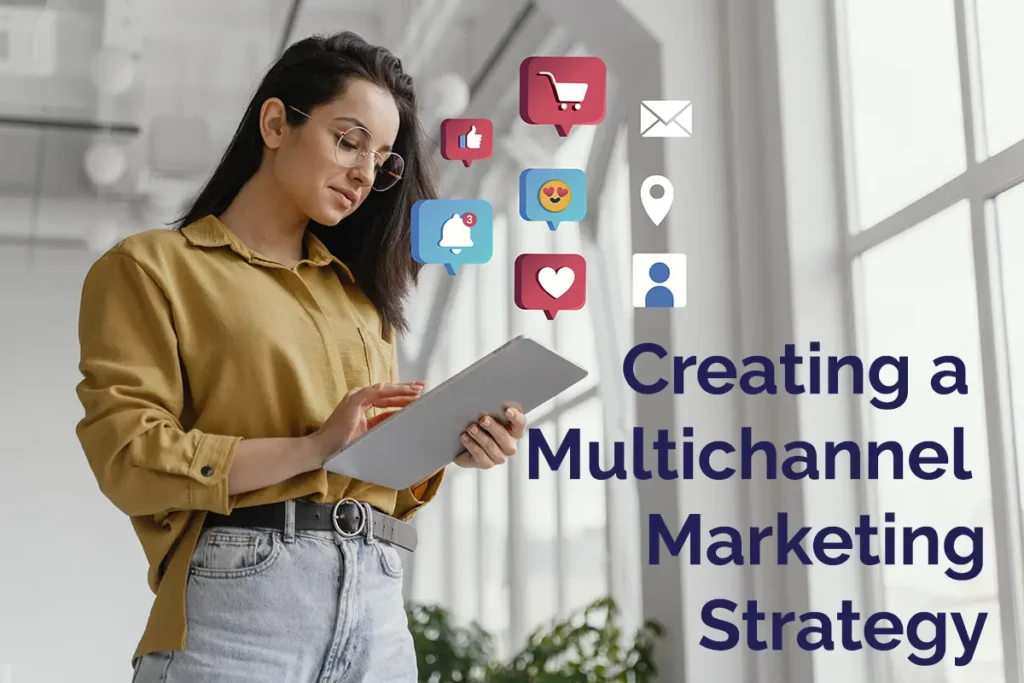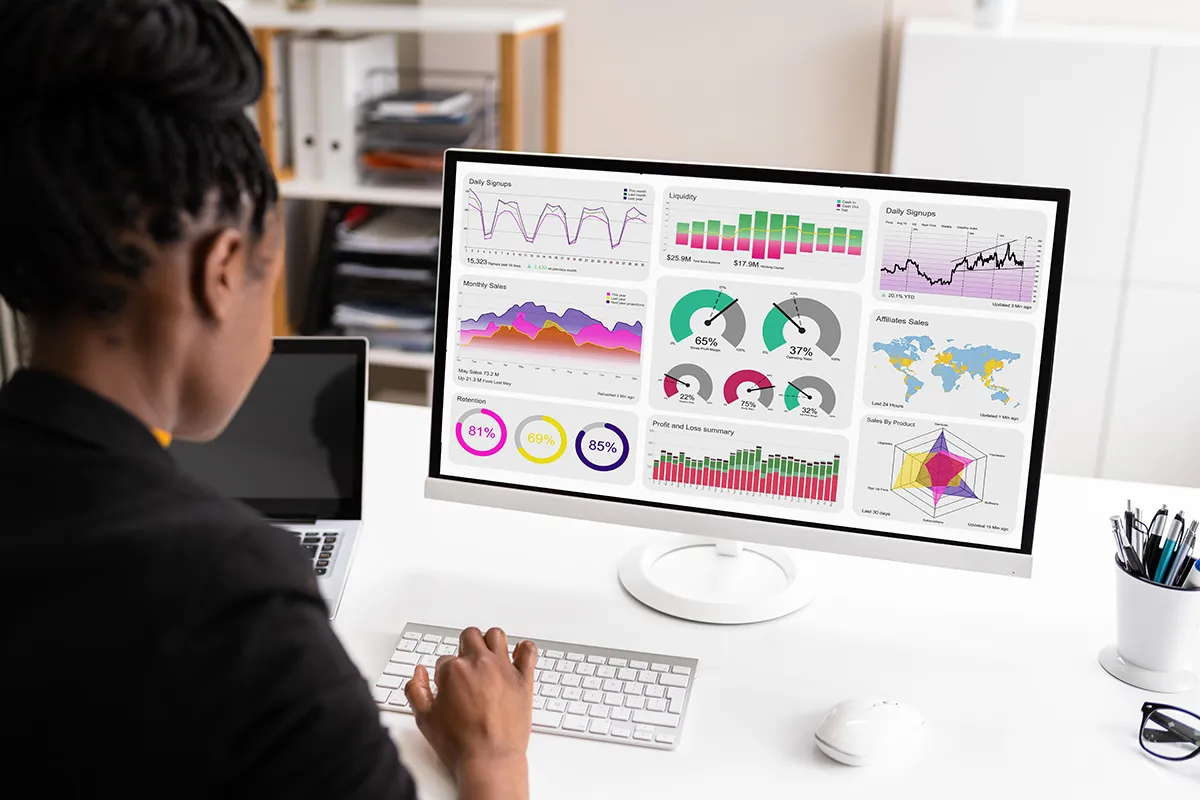Creating a Multichannel Marketing Strategy: A Complete Guide
Multichannel Marketing
Modern consumers don’t interact with brands in a single space—they’re scrolling through social media, reading emails, browsing websites, and shopping in-store. To effectively connect with your audience, you need to create a multichannel marketing strategy. This approach ensures your message reaches customers across the platforms they use most, creating a unified and seamless experience.
This guide will take you through everything you need to know to develop a successful multichannel marketing strategy, complete with actionable steps, real-world examples, and common pitfalls to avoid.

Key Takeaways
- Learn what multichannel marketing is and why it’s vital in today’s digital landscape.
- Understand how to align your marketing efforts across multiple platforms for consistent messaging.
- Discover examples of successful multichannel campaigns and how to measure their effectiveness.
Table of Contents
- What Is Multichannel Marketing?
- Why Multichannel Marketing Matters
- Steps to Create a Multichannel Marketing Strategy
- Identify Your Target Audience
- Choose the Right Marketing Channels
- Create Consistent Messaging
- Leverage Marketing Automation
- Examples of Successful Multichannel Marketing
- Measuring and Optimizing Your Strategy
- Common Mistakes to Avoid
- Conclusion: Getting Started with Multichannel Marketing
1. What Is Multichannel Marketing?
Multichannel marketing is the practice of using multiple platforms to engage with your target audience. This can include email, social media, websites, SMS, paid ads, and even offline methods like direct mail or events.
The goal is to create a cohesive experience where your audience recognizes your brand no matter where they encounter it. For instance:
- A user sees your Instagram ad, clicks through to your website, and receives a follow-up email about the product they viewed.
- An in-store shopper receives an SMS about a special offer, prompting them to make another purchase.
For tips on improving online customer journeys, check out our UX Design services.
2. Why Multichannel Marketing Matters
Consumers are no longer loyal to a single platform or channel. Research shows that businesses using three or more channels in their marketing campaigns see a 494% higher engagement rate compared to those using just one channel.
Benefits of Multichannel Marketing:
- Broader Reach: Connect with customers across multiple touchpoints.
- Increased Engagement: Reinforce your messaging through multiple interactions.
- Improved Customer Experience: Provide a seamless journey from awareness to purchase.
- Higher ROI: Diversified efforts reduce reliance on one platform, making your campaigns more resilient.
3. Steps to Create a Multichannel Marketing Strategy
Step 1: Identify Your Target Audience
To craft a successful strategy, you need to know who you’re speaking to.
- Create Buyer Personas: Define your ideal customers’ demographics, preferences, and behaviors.
- Analyze Data: Use tools like Google Analytics, CRM platforms, or social media insights to learn how your audience interacts with your brand.
Example: A fitness brand targeting millennials might focus on Instagram, YouTube, and fitness blogs, while a financial services firm targeting professionals may prioritize LinkedIn and email marketing.
Learn more about connecting with your audience in our blog on local SEO strategies.
Step 2: Choose the Right Marketing Channels
Not all channels are suitable for every business. Focus on where your audience spends their time.
Popular Channels to Consider:
- Social Media: Instagram, Facebook, LinkedIn, TikTok
- Email Marketing: Newsletters, promotions, and drip campaigns
- Content Marketing: Blogs, videos, and guides on your website
- SMS & Push Notifications: Immediate updates and offers
- Paid Ads: Google Ads, Facebook Ads, and influencer partnerships
For help managing your paid campaigns, explore our Google Ads services.
Step 3: Create Consistent Messaging
Your brand voice and message should remain consistent across all channels. This builds trust and recognition.
How to Ensure Consistency:
- Develop a style guide with colors, fonts, and tone of voice.
- Align campaigns with a central theme or message.
Example: Coca-Cola’s “Share a Coke” campaign used personalized bottles, ads, social media, and retail displays to create a cohesive multichannel experience.
Step 4: Leverage Marketing Automation
Automation tools can help streamline your efforts and provide a personalized experience.
Popular Tools:
- HubSpot: CRM and multichannel automation.
- Mailchimp: Email and ad campaign management.
- Hootsuite: Social media scheduling and analytics.
Example: A clothing retailer might automate cart abandonment emails that include personalized product recommendations and exclusive discounts.
4. Examples of Successful Multichannel Marketing
Example 1: Starbucks Rewards Program
Starbucks uses its mobile app, email, and in-store experiences to promote rewards and offers. Customers can order through the app, receive personalized discounts, and enjoy a consistent experience in-store.
Why It Works: The integration of online and offline channels makes the process seamless for customers.
Example 2: Nike’s Digital Ecosystem
Nike uses social media, apps like Nike Run Club, email, and in-store experiences to create a multichannel strategy. Their messaging revolves around motivation and personalization.
Why It Works: Consistent branding and a focus on customer data create a tailored experience.
5. Measuring and Optimizing Your Strategy
No strategy is complete without tracking performance and making improvements.
Metrics to Track:
- Engagement Rate: Likes, shares, comments, and clicks.
- Conversion Rate: Percentage of users who take the desired action.
- Customer Retention: How many customers return to your brand.
Tools to Use:
- Google Analytics for website traffic.
- Social media insights for engagement metrics.
- Email marketing platforms for open and click-through rates.
6. Common Mistakes to Avoid
- Using Too Many Channels: Spreading your efforts too thin can dilute your impact. Focus on the platforms that matter most to your audience.
- Inconsistent Messaging: Confusing messaging can damage trust.
- Neglecting Data: Ignoring performance metrics leads to wasted resources.
For more marketing tips, explore our blog on improving website speed for better SEO.
7. Conclusion: Getting Started with Multichannel Marketing
A well-executed multichannel marketing strategy helps you engage with your audience wherever they are. By identifying the right channels, creating consistent messaging, and leveraging automation tools, you can deliver an impactful customer experience that drives results.
Ready to take your marketing to the next level? Start by evaluating your current channels and aligning your efforts to create a seamless, engaging journey for your customers.
For more insights, check out our digital marketing services.
Our Blog
Digital Marketing Insights
Is Your Website a Lead Machine or Just a Digital Business Card?
Is Your Website a Lead Machine or Just a Digital Business Card? September 9, 2025 Web Design Table of Contents The Harsh Truth About Most Trade Websites You...
How SEO, UX, and Data Analytics Work Together to Drive Results
How SEO, UX, and Data Analytics Work Together to Drive Results September 1, 2025 SEO Table of Contents SEO Is No Longer Just About Keywords Search engine optimization...
AI-Driven SEO: Generative & Answer Engine Optimization Explained
AI-Driven SEO: Generative & Answer Engine Optimization Explained August 21, 2025 Google Business Profile Table of Contents The Future of SEO Is Already Here Search engine optimization (SEO)...
Ready to take the next step?
Contact us today to see how we can make digital marketing work for your business.




